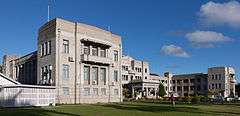Suva
Suva (Fijian pronunciation: [ˈsuβa]) is the capital and largest metropolitan city in Fiji. It is located on the southeast coast of the island of Viti Levu, in the Rewa Province, Central Division.
Suva सुवा Capital City of Fiji | |
|---|---|
Suva central business district | |
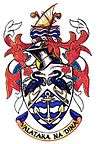 Coat of arms | |
| Motto(s): Valataka na Dina (Fight for the Right) | |
 Suva within Fiji | |
| Country | Fiji |
| Island | Viti Levu |
| Division | Central Division |
| Government | |
| • Type | Suva City Council |
| Area | |
| • City | 2,048 km2 (790.5 sq mi) |
| Population (2017) | |
| • City | 93,970 |
| • Density | 46/km2 (120/sq mi) |
| • Urban | 185,913 |
| Time zone | UTC+12 (1200 GMT) |
| Website | www |
In 1877, it was decided to make Suva the capital of Fiji, as the geography of former main European settlement at Levuka on the island of Ovalau, Lomaiviti province proved too restrictive. The administration of the colony was moved from Levuka to Suva in 1882.
At the 2017 census, the city of Suva had a population of 93,970.[1] Including independent suburbs, the population of the Greater Suva urban area was 185,913 at the 2017 census.[2] Suva, along with the bordering towns of Lami, Nasinu, and Nausori, have a total urban population of around 330,000, over a third of the nation's population. This urban complex (not including Lami) is known also as the Suva-Nausori corridor.
Suva is the political, economic, and cultural centre of Fiji. It is also the economic and cultural capital of the South Pacific, hosting the majority of regional headquarters of major corporations, as well as international agencies and diplomatic missions in the region. The city also has a thriving arts and performance scene, with a growing reputation as the region's fashion capital.
History
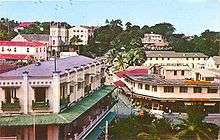
.jpg)
In return for a promise to pay off debts owed to the United States by the Bauan chieftain, Seru Epenisa Cakobau, the Australian-based Polynesia Company was granted 5,000 km2 (1,900 sq mi) of land, 575 km2 (222 sq mi) of it near what was then the village of Suva, in 1868. The original intention was to develop a cotton farming industry, but the land and climate proved unsuitable.[3]
Following the cession of the Fiji Islands to the United Kingdom in 1874, the colonial authorities decided to move the capital to Suva from Levuka, Ovalau, Lomaiviti in 1877, as Levuka's location, between a steep mountain and the sea, made any expansion of the town impractical. The transfer was made official in 1882. Colonel F.E. Pratt of the Royal Engineers was appointed Surveyor-General in 1875 and designed the new capital, assisted by W. Stephens and Colonel R.W. Stewart.[4]
Following the promulgation of the Municipal Constitution Ordinance of 1909, Suva acquired municipal status in 1910. The town initially comprised one square mile; these boundaries remained intact until 1952 when the Muanikau and Samabula wards were annexed, expanding its territory to 13 km2 (5.0 sq mi). In October that year, Suva was proclaimed a city – Fiji's first. Tamavua was subsequently annexed; the most recent extension of the city boundaries has been to incorporate the Cunningham area to the north of the city. Urban sprawl has resulted in a number of suburbs that remain outside of the city limits; together with the city itself, they form a metropolitan area known as the Greater Suva Area.[5]
The city hosted the 2003 South Pacific Games, being the third time in the event's 40-year history that they had been held in Suva. As part of the hosting of the event, a new gymnasium and indoor sports centre, swimming pool, and stadium; field hockey pitch; and stands were built in the area around Suva, funded by the government and a $16 million People's Republic of China aid package.[6]
Geography and physical characteristics
Suva is the capital of Fiji and is a harbour city built on a peninsula reaching out into the sea. It has a mix of modern buildings and traditional colonial architecture.
The city is perched on a hilly peninsula between Laucala Bay and Suva Harbour in the southeast corner of Viti Levu. The mountains north and west catch the southeast trade winds, producing moist conditions year round.
Suva is the commercial and political centre of Fiji, though not necessarily the cultural centre. It is Fiji's main port city.
Although Suva is on a peninsula, and almost surrounded by sea, the nearest beach is 40 kilometres (25 mi) away at Pacific Harbour and the nearby coast is lined by mangroves. A significant part of the city centre, including the old Parliament buildings, is built on reclaimed mangrove swamp.
Central
The Central Business District encompasses an area known as the Central Ward; one of Suva's six wards, Central occupies close to the whole south-western side of the Suva Peninsula.
City wards
The city's six wards beginning from the city centre, then north, then clockwise rotation.
- Central: city centre, CBD, nucleus of the city.
- Tamavua: residential and urban area.
- Cunningham: semi-urban and residential area.
- Nabua: military base, Southern Division Police Headquarters, urban, residential, separate town centre, and industrial zone.
- Samabula: urban, residential, separate town centre, university, and large industrial zones.
- Muanikau: residential, urban, large sporting venues, university, and recreational areas.
Suva–Nausori Corridor
Suva sits in the middle of an urban conurbation that stretches from Lami, to the immediate west of the city, along the Queens Highway and Nasinu town, on its eastern border all the way to the Rewa River, along the Kings Highway. This conurbation, sometimes known as the Suva Urban Complex, continues till Nausori, over the Rewa River. The north of the city to its northeast contains the rainforest park areas of Colo-i-Suva and Sawani, along the Princes Road, connecting at the Rewa River Bridge. This entire conurbation, is generally referred to by locals as Suva, although it contains four local government areas. In formal reference, this complex has come to be known as the Suva–Nausori Corridor (where Lami is generally excluded) and is the most populous area in Fiji, with over 330,000 people.
Climate
| Suva | ||||||||||||||||||||||||||||||||||||||||||||||||||||||||||||
|---|---|---|---|---|---|---|---|---|---|---|---|---|---|---|---|---|---|---|---|---|---|---|---|---|---|---|---|---|---|---|---|---|---|---|---|---|---|---|---|---|---|---|---|---|---|---|---|---|---|---|---|---|---|---|---|---|---|---|---|---|
| Climate chart (explanation) | ||||||||||||||||||||||||||||||||||||||||||||||||||||||||||||
| ||||||||||||||||||||||||||||||||||||||||||||||||||||||||||||
| ||||||||||||||||||||||||||||||||||||||||||||||||||||||||||||
Suva features a tropical rainforest climate under the Köppen climate classification. However, as a trade-wind climate which besides knows occasional cyclones, it is not equatorial. The city sees a copious amount of precipitation during the course of the year, with no true dry season due to no month having an average rainfall below 60 mm (2 in). Suva averages 3,000 mm (118 inches) of precipitation annually with its driest month, July averaging 125 mm (4.92 in). In fact, during all 12 months of the year, Suva receives substantial precipitation, such that the term "fine weather" in a weather report simply means "not actually raining". Like many other cities with a tropical rainforest climate, temperatures are relatively constant throughout the year, with an average high of about 28 °C (82 °F) and an average low of about 22 °C (72 °F).
Suva has a markedly higher rainfall than Nadi and the western side of Viti Levu, which is known to Suva citizens as "the burning west". The second Governor of Fiji, Sir Arthur Gordon, allegedly remarked that it rained in Suva like he had seen nowhere else before and that there was hardly a day without rain. The most copious rainfall is observed from November to May, while the slightly cooler months from June to October are considerably drier.
| Climate data for Suva, Fiji (1971–2000) | |||||||||||||
|---|---|---|---|---|---|---|---|---|---|---|---|---|---|
| Month | Jan | Feb | Mar | Apr | May | Jun | Jul | Aug | Sep | Oct | Nov | Dec | Year |
| Record high °C (°F) | 35.0 (95.0) |
36.0 (96.8) |
37.0 (98.6) |
34.0 (93.2) |
34.0 (93.2) |
32.0 (89.6) |
32.0 (89.6) |
32.0 (89.6) |
32.0 (89.6) |
34.0 (93.2) |
34.0 (93.2) |
36.0 (96.8) |
37.0 (98.6) |
| Average high °C (°F) | 30.8 (87.4) |
31.2 (88.2) |
30.9 (87.6) |
29.9 (85.8) |
28.5 (83.3) |
27.7 (81.9) |
26.8 (80.2) |
26.7 (80.1) |
27.2 (81.0) |
28.2 (82.8) |
29.3 (84.7) |
30.3 (86.5) |
28.9 (84.0) |
| Daily mean °C (°F) | 27.4 (81.3) |
27.6 (81.7) |
26.4 (79.5) |
26.6 (79.9) |
25.4 (77.7) |
24.6 (76.3) |
23.8 (74.8) |
23.7 (74.7) |
24.1 (75.4) |
25.1 (77.2) |
26.1 (79.0) |
26.9 (80.4) |
25.6 (78.2) |
| Average low °C (°F) | 23.9 (75.0) |
24.0 (75.2) |
23.9 (75.0) |
23.3 (73.9) |
22.2 (72.0) |
21.4 (70.5) |
20.7 (69.3) |
20.7 (69.3) |
21.0 (69.8) |
21.9 (71.4) |
22.8 (73.0) |
23.5 (74.3) |
22.4 (72.3) |
| Record low °C (°F) | 19.0 (66.2) |
19.0 (66.2) |
19.0 (66.2) |
16.0 (60.8) |
16.0 (60.8) |
14.0 (57.2) |
13.0 (55.4) |
14.0 (57.2) |
14.0 (57.2) |
14.0 (57.2) |
13.0 (55.4) |
17.0 (62.6) |
13.0 (55.4) |
| Average rainfall mm (inches) | 371 (14.6) |
265 (10.4) |
374 (14.7) |
366 (14.4) |
270 (10.6) |
163 (6.4) |
136 (5.4) |
158 (6.2) |
177 (7.0) |
221 (8.7) |
245 (9.6) |
277 (10.9) |
3,023 (119.0) |
| Average precipitation days | 23 | 22 | 24 | 23 | 21 | 18 | 19 | 18 | 17 | 19 | 19 | 22 | 245 |
| Source: http://www.met.gov.fj/ClimateofFiji.pdf | |||||||||||||
Demographics

Suva is a multiracial and multicultural city. Indigenous Fijians and Indo-Fijians, the two principal ethnic groups of Fiji, comprise the bulk of Suva's population, and the city is home to the majority of Fiji's ethnic minority populations, which include Rotumans, Lauans, Rambians, Caucasians (Europeans or Kaivalagi), part-Europeans (of European and Fijian descent), or Kailoma" and Chinese, amongst others. The most widely spoken language is English, but Fijian, Hindustani, and other languages are also spoken by their respective communities.
Suva boasts having representation of all major indigenous Pacific groups, and is sometimes referred to as the “New York of the Pacific". The city's reputation as a major economic centre in the region, and also its hosting of the University of the South Pacific's main campus has led to an influx of Pacific migrants who study, work and live in the city and its boroughs.
| 1986 | 1996 | 2007 | 2017 | ||||||||
|---|---|---|---|---|---|---|---|---|---|---|---|
| Suva City | 141,273 | 167,975 | 85,691 | 93,970 | |||||||
| Official figures from population censuses | |||||||||||
Municipal government
Suva has municipal status and is supposed to be governed by a Lord Mayor and a 20-member city council. The Suva City Council is the municipal law-making body of the city of Suva, Fiji's capital. It consists of 20 Councillors, elected for three-year terms from four multi-member constituencies called wards. Councillors, who are elected by residents, landowners, and representatives of corporations owning or occupying rateable property in Suva, elect a Lord Mayor and Deputy Lord Mayor from among their own members; they serve one-year terms and are eligible for re-election.
In 2009, the Military-backed interim government dismissed all municipal governments throughout Fiji and appointed special administrators to run the urban areas. As of 2015, elected municipal government has not been restored. The special administrator of Suva, along with nearby Nasinu, is Chandu Umaria, a former Lord Mayor of Suva.[7]
Landmarks
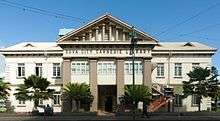
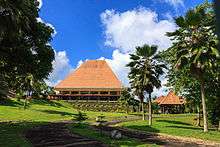
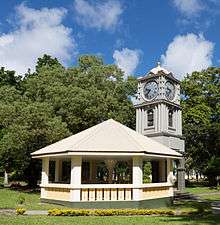
A well-known landmark is the Suva City Carnegie Library, built in 1909 as well as many other colonial buildings.
The government buildings complex sits on what was once the flowing waters of a creek. It was drained in 1935 and over five kilometres of reinforced concrete pilings were driven into the creek bed to support the massive buildings to be erected. After the foundation stone was laid in 1937, the building was completed in 1939; a new wing was completed in 1967. Parliament, however, was moved to a new complex on Ratu Sukuna Road in 1992.
Government House was formerly the residence of Fiji's colonial Governors and, following independence in 1970, Governors-General. It is now the official residence of Fiji's President. Originally erected in 1882, it had to be rebuilt in 1928, following its destruction by lightning in 1921.
The Suva campus of the University of the South Pacific (USP) occupies what was once a New Zealand military base. It is the largest of the many USP campuses dotted throughout the South Pacific and the largest university in the Pacific Islands outside Hawaii. It offers courses which are internationally recognised and endorsed.
The Fiji Museum, in Thurston Gardens, was founded in 1904 and originally occupied the old town hall, but moved to its present location in 1954. The museum houses the most extensive collection of Fijian artefacts in the world, and is also a research and educational institution, specialising in archaeology, the preservation of Fiji's oral tradition, and the publication of material on Fiji's language and culture.
Suva has around 78 parks, these include the new Takashi Suzuki Garden, Apted Park at Suva Point which is a popular spot for viewing sunrise and sunset, Thurston Gardens which was opened in 1913 and has flora from throughout the South Pacific.
Suva has many shopping and retail areas, notably Cumming street, which has since colonial times been a vibrant and colourful shopping area. Features of these streets include the original colonial buildings and narrow roads. More modern shopping malls, such as the Suva Central Shopping Mall, Mid-City Mall as well as MHCC are all part of the developments to give the city a modern and sophisticated look.
In December 2009, there was an addition to Suva's skyline with the opening of TappooCity valued at US$25.7 million (FJD50 million) a joint venture six-storey low-rise building project by FNPF & Tappoo Group of Companies as Fiji's (and South Pacific's) largest department mall at present outside Australia & New Zealand.
Construction work began in January 2011 for a FJD30 million mini-mall complex at Grantham Road behind the Sports-City Complex and close proximity to University of the South Pacific, which will house restaurants, retail outlets and cinemas. Although construction was scheduled for end 2011, this complex will now be ready mid-2012.[8]
Economy
Unlike most cities and towns in Fiji and indeed many around the world, Suva did not grow around one industry but has gradually developed as a hub and the largest and most sophisticated city in the Pacific Islands. Fijians of Indian descent have largely shaped the economy of Fiji, contributing immensely to the growth of Suva and its status as the economic and political capital of Fiji. Suva is the commercial center of Fiji with most banks having their Pacific headquarters here, including ANZ and the Westpac Bank. Most national financial institutions, non-governmental organisations and government ministries and departments are headquartered here. At one point both Air Pacific[9] (now called Fiji Airways and Air Fiji)[10] were headquartered in Suva.
A large part of Fiji's international shipping is conducted at Suva's Kings Wharf as well as docking of international cruise ships, which has led to a growth in Suva's tourism industry. Many services are provided in Suva and is the basis of Suva's industrial and commercial activity.
There are large industrial areas, the largest being at Walu Bay, where there is a saturation of factories and warehouses and import and export companies. This area contains many shipyards for ship building and repairs as well as container yards. There is a brewery and many printeries. Other notable industrial zones are located in Vatuwaqa, Raiwaqa and Laucala Beach.
There is a large commercial and shopping scene in Suva with streets such as Cumming Street and Victoria Parade being popular. There are many shopping complexes to visit and many markets.
Institutions
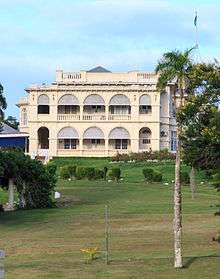
Suva is host to more international and regional intergovernmental agencies and NGOs than any other Pacific Island capital. Some of the bodies with a presence in Suva are:
- The TRAFFIC Oceania South Pacific Programme – funded by the UK Foreign and Commonwealth Office, is in Suva, in the offices of the WWF South Pacific Programme. The programme assists in the implementation of CITES and strengthens collaboration with the World Wide Fund for Nature.
- The Fiji School of Medicine – which is now classed as a regional agency and a member of the Council of Regional Organisations in the Pacific.
- The University of Fiji.
- The Fiji School of Nursing.
- The University of the South Pacific which operates a campus in Suva as well as at other South Pacific locations.
- The Fiji National University which is a major polytechnic in Fiji and caters students from many small Pacific Island nations. It has centres in other Fiji towns of Nadi, Ba and Labasa.
- The Fiji College of Advanced Learning.
- TPAF (The Training and Productivity Authority of Fiji).
- The Pacific Community (SPC).
- The Pacific Islands Forum Secretariat.
- The South Pacific Applied Geoscience Commission (SOPAC).
- St John's Theological College, Suva.
- The Pacific Regional Seminary (PRS).
- The Pacific Theological College (PTC).
- Femmus School of Hospitality.
- Alliance Française.
- Greenpeace Pacific.
- UNDP Headquarters (Papua New Guinea, Vanuatu, Fiji, Tonga, Samoa, Cook Islands, Palau, Micronesia, Marshall Islands, Tuvalu, Kiribati, Niue, Nauru).
- Asian Development Bank Headquarters Pacific
- World Bank Headquarters
- Mindpearl Ltd[11] Pty (International Call Center) -- Mindpearl started in 1999 as a captive contact centre where the lifeblood and entire basis of the offering was to provide seamless 24/7 customer support in multiple languages to the customers and passengers of a consortium of 11 European airlines headed by Swissair. Fast forward to 2018 and Mindpearl has successfully diversified to support many non-airline brands. Today Mindpearl provides contact centre solutions for global names in the aviation, telecommunications, retail and weight management industries, offering multilingual services around the globe on a 24/7 basis, as required.
Entertainment and culture
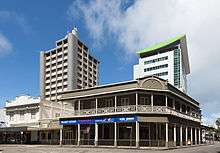
Suva is the cultural and entertainment capital of Oceania, and is host to many regional, national and local events. The city has very developed and advanced entertainment and event infrastructure, and hosts a busy calendar of events every year.
Venues
Suva has many multipurpose venues, the main ones being:
- The Vodafone Arena – Seats 4000 – 5000 people depending on configuration.
- The ANZ National Stadium – Seats 30,000 people
- The FMF National Gymnasium Suva – Seats 2000
- The Civic Auditorium – Seats 1000
- Albert Park – Grandstand Seating cum Stand-up concert and sporting venue
Parks and gardens
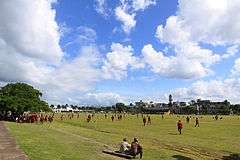
Suva has a number of parks and a few gardens. Albert Park, in the City centre, is famous as the stage for many national-historical events such as the Independence of Fiji, the landing by Kingsford Smith on the Southern Cross and many parades and carnivals. Sukuna Park, also in the CBD is a popular recreational park and has many performances and events on a weekly basis. Thurston Gardens (named for Governor of Fiji John Bates Thurston) is the city's main botanical garden and the location of the Fiji Museum. Queen Elizabeth Drive is popular as a scenic walk along Suva's foreshore. Many city residents go to the Colo-i-Suva Forest Reserve, a short drive from the city centre, to swim under the waterfalls.
Music
Many concerts are held in Suva, some coming from other countries to enjoy world-class performances. Concerts and shows are usually staged at one of the above-mentioned venues on a monthly basis. Some of the famous music artists to hold shows in Suva include UB40, Lucky Dube, O'Yaba, Sean Kingston and many others. Due to a favoured interests in Bollywood by all, some prominent singers and actors have held shows in the capital which includes singers like Shaan, Sonu Nigam, Sunidhi Chauhan and movie artists like Shah Rukh Khan,[12] Priyanka Chopra,[13] Johnny Lever, Dino Morea, Rajpal Yadav, Sunny Leone and the like.
Food
Suva offers a varied and interesting culinary experience where almost every if not all major cuisines are represented. Particularly popular cuisines are Fijian, Indian, Chinese, American and foods from other cultural and ethnic backgrounds. Fijians of Indian descent have influenced Fiji's cuisine, in the process creating the uniquely Fiji Indian curry. Indentured labourers brought with them spices, chilies and other herbs and vegetables which now are part of the Fijian culinary experience.
Festivals
During the course of the year, arts, music and trade festivals are held in Suva, albeit on a small scale. There are a few large and notable festivals that occur annually and these include the Hibiscus Festival (largest carnival in the South Pacific islands), the New Years Street Party, and the Fiji Show Case tradeshow that includes carnival rides, food as well as magic and circus performances.
Night life
Suva has a vibrant nightlife where most nightclubs and bars open in the late afternoon and remain open till 5 am. Suva's nightlife caters to all tastes, moods and likes. Food stalls are open throughout the night and the city is well policed at night. Apart from nightclubs, there are lounges and bars that cater to those seeking low-key entertainment.
The seedier side of Suva is Victoria Parade where night clubs such as Signals Night Club, East Court Restaurant, and Angel Night Club are located in the same stretch.
Cinema
Downtown Suva has one main cinema complex, Village Six, owned by the Damodar Brothers. The Regal and Phoenix theatres, once prominent cinema/theatre haunts before the new millennium owned by the Sharan Brothers, have since closed down. A second cinema complex is the Damodar city complex (also owned by the Damodar brothers), in the shopping area of Laucala Bay, which has a further six screens, along with shopping and eating outlets and cafes.
Another interesting feature of Suva is the increasing number of Bollywood films being shot in the capital.
Sports
Suva plays host to many regional and national sporting events, most notably at the ANZ National Stadium. A special highlight is the Coca-Cola Games, the largest secondary school athletics meet in the world. The Capital City is represented in major sporting events by its respective rugby, netball and soccer teams.
Suva was the host of the first Pacific Games, in 1963. Forty years later in 2003 the Games returned to Fiji's capital, with a full program of 32 sports introduced for the first time. Suva held the games for the second time in 1979. Having hosted the event three times, Suva has held the Pacific Games more often than any other city.
Mass media
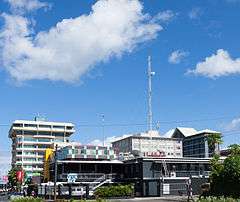

Headquartered in Suva are the three main national television stations, Fiji One, FBC TV and MAI TV along with the Fiji Ministry of Information, which produces government programs as well as national news and current affairs bulletins. Fiji One produces and airs its evening 'National News' bulletin from its studios in Gladstone Road in Central; FBC TV airs its 'FBC News' bulletin from its studios, also on Gladstone Road. Sky Pacific and Pacific Broadcasting Services Fiji are the two pay satellite television company headquartered here.
Suva is home to the national radio broadcasters Fiji Broadcasting Corporation (FBC) and Communications Fiji Limited (CFL), between them providing 12 of the national radio stations.
The two dailies, The Fiji Times and The Fiji Sun are printed here (and, formerly, the Fiji Post). Many other weekly newspapers are headquartered and published in Suva, including Inside Fiji, Nai Lalakai (iTaukei language weekly), Shanti Dut (Fiji Hindi weekly), national magazines such as Repúblika and Mai Life as well as regional magazines such as Islands Business.
Shopping and fashion
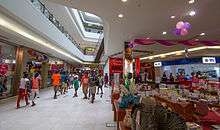
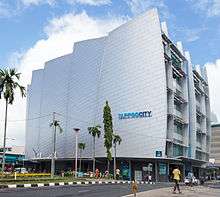
Suva is one of the most shopper friendly cities in the Pacific. The city offers its shops in a cluster that is referred to as Suva Central. Areas like Cumming Street and Marks Street are for clothing, jewellery, food, electronics, pharmaceuticals and more. Terry Walk and the Flea Market offer handicrafts and local ware. Close by, huge, new shopping complexes dominate the canal area, such as MHCC (Morris Hedstrom City Center), Tappoo City and Suva Central. There are telecommunication and electronic stores, as well as sporting gear stores in the outer areas of this radius.
Suva also hosts the headquarters of the Fashion Council of Fiji, the regions most significant fashion organisation. The Fijian Fashion Festival, the regions largest trade and consumer fashion platform, occurs annually at the Grand Pacific Hotel in Suva.
Transportation
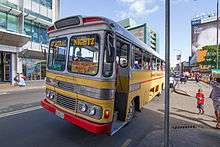
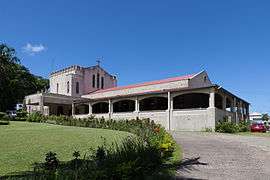
Nausori International Airport caters mainly to the domestic market, connecting Suva with Fiji's other international airport, Nadi International Airport, and serves smaller international aircraft, at one time servicing Brisbane and Sydney routes. As of August 2010, Fiji Airways will operate a twice weekly flight from Nausori International Airport to Auckland, New Zealand to complement its 13 weekly flights from Nadi to Auckland, furthermore, the Nausori – Sydney route has resumed.[14] The airport provides services to its immediate Pacific neighbours Tonga, Tuvalu and Vanuatu as well as the dependency of Rotuma.
Suva has a public transport system consisting of buses (Central Transport Co.) and taxis servicing the metropolitan area as well as the cities of Nasinu, Nausori and Lami town. There are bus services connecting Suva with other towns and cities on Viti levu by way of either the Kings, Queens or Princes highways, all originating within Suva, although the latter terminates at Rewa Bridge in Nausori.
There is a domestic ferry services from the Princess Wharf to the outer islands of Fiji as well as Vanua Levu. International ships and cruise liners dock at Suva's Kings Wharf.
Suva city gallery
 Southern end of the Suva Peninsula
Southern end of the Suva Peninsula
Notable residents
This is a list of famous people who are either living in, or are originally from Suva.
- Petero Civoniceva (born in Suva), Australian rugby league player
- Noor Dean, a Fiji Indian lawyer and politician, Suva City Council, and House of Representatives
- Josua Koroibulu, plays rugby league for the Fiji national rugby league team
- Nalini Krishan, Star Wars film actress
- Craig Parker, New Zealand actor
- Paulini (born in Suva), Australian singer and songwriter
- Semi Radradra, Parramatta Eels player and plays for the Fiji national rugby league team
- Waisale Serevi, Fiji Rugby Team
- Devanesh Sharma, leading Suva lawyer and former President of the Fiji Law Society
- Jimmy Snuka, professional wrestler between 1968–2015
- Sitiveni Sivivatu, All Black Chiefs (Super rugby franchise)
- Semi Tadulala, plays rugby union for Gloucester Rugby in England and Fiji in rugby union previously a professional rugby league footballer for Melbourne Storm, Bradford Bulls and the Fiji national rugby league team
- Lote Tuqiri, played rugby union for the Australian national rugby union team
- Marques Whippy, professionnel basketball player[15]
Twin towns – sister cities

.svg.png)

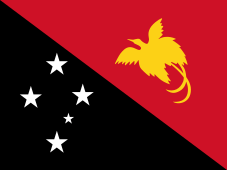


See also
Notes
- "Fiji Islands Bureau of Statistics – Population and Demography". Statsfiji.gov.fj. Retrieved 10 October 2012.
- "2007 Census of Population and Housing". Retrieved 25 January 2017.
- "ClimateFinder.com - Nausori, Fiji". www.climatefinder.com. Retrieved 4 February 2020.
- "Europcar Fiji - Suva". www.europcar.com.fj. Retrieved 4 February 2020.
- Nath, Shyam; Roberts, John L.; Madhoo, Yeti Nisha (2010). Saving Small Island Developing States: Environmental and Natural Resource Challenges. Commonwealth Secretariat. p. 164. ISBN 9781849290319.
- "PATARA sponsors South Pacific Games 2003 and provides Information & Communications Technology for a "Smart Games"". patarapacific.com. Archived from the original on 4 August 2012. Retrieved 12 February 2020.
- "Ba ex-mayor says Fiji municipal reform was expected". Radio New Zealand International. 2 February 2009. Retrieved 15 November 2011.
- "Construction works for a $30 million complex that will include a cinema has begun in Suva". fijisun. Archived from the original on 23 July 2011.
- "World Airline Survey." Flight Global. 10 April 1969. 557.
- World Airline Directory. Flight International. 16–22 March 2004. "63." "185 Victoria Parade, Suva, Fiji."
- http://www.mindpearl.com
- "Interviews with Bollywood Actors & Actresses". Seasons India. 24 March 2004. Retrieved 10 October 2012.
- "Priyanka Chopra's Fiji Tour". Liveindia.com. Retrieved 10 October 2012.
- "Fiji Airways to connect Sydney and Suva – Travel Weekly". www.travelweekly.com.au.
- "Marques Whippy – Fiji – Oceania All-Stars Tour – SportsTG". SportsTG.
- "Sister Cities". suvacity.org. Suva. Retrieved 20 July 2020.
- "Sister-city relation to enhance trade". fijisun.com.fj. Fiji Sun. 12 December 2012. Retrieved 20 July 2020.
References
- Fiji, by Korina Miller, Robyn Jones, Leonardo Pinheiro – Travel – 2003, published by Lonely Planet, pages 139–141, details on Suva City.
- The Suva City Library: A Brief History and Development, 1909–1980, by S Baksh – 1980
- Pluralism and Social Change in Suva City, Fiji, by Alexander Mamak – 1974, Thesis/dissertation; Ethnology (Fiji, Suva City); Suva City, Fiji Islands (Social conditions)
- A History of the Pacific Islands: Passages Through Tropical Time – Page 162, by Deryck Scarr 2001 – 323 pages.
- Frommer's South Pacific, by Bill Goodwin – Travel – 2004, pages 258–263
External links
| Wikimedia Commons has media related to Suva. |

- Suva City Council (official website)
